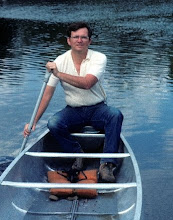Evocative is winter’s retreat, before spring begins and life awakens, invisible forces secretly work life’s magic. The air is still, so very still, and cool, a bit too cool; the sun is radiant, bright, too bright on the few remaining patches of snow. They sparkle so on this cloudless day as blue sky is as blue as blue sky can be. It seems that only in the late winter, early spring or mid October does such sky delight. Evergreens are splendid against the blue of sky and tans and browns of leafless trees and shrubs.
A lone crow breaks the silence, cawing his story for all his world to hear. Perhaps I am the only one to note his solitaire refrain so quiet seems the woods. I know I am not important in his world, but his caw renews faith that spring approaches, that is important in mine.
Although the sun is warm, the spring seeps are stilled from night’s chill. Despite the cold nights, a spring freshet near the house was busy with the season’s business; bringing life’s liquid from freshly melted snow to eagerly awaiting roots. So busy doing spring.
Now with only scattered remnants left the white snow blanket, now quite threadbare, retreats deeper into darker recesses of the woods. The cold hangs tightly in these chill pockets. Daylight’s bright sun and blue sky come at a price, paid with clear, dark, frosty nights of jet black sky and a penetrating cold that needs all day to thaw and soften remaining snow.
April 2011
For miles along the thruway, Interstate 90 between Rochester and Buffalo and on the parallel NYS Rte. 20, large sections of the wet, swampy areas and ditches, once the realm of cattails and redwing blackbirds are now are taken over by perennial pampas grass. In April, tall, these dried stalks are invading wetlands and overgrowing the valuable native cattails.
Last April was warm and tinder dry, by contrast this April was cold and moist. Last May there were even more unseasonable cold and late frosts. This May is yet to be.
May: Each spring has its unique personality. Some begin early, some late, some wet some dry, but all are sweet. This spring has been late and wet, last spring was warm early and dry but ended cold with freezes while many plant blossoms were peaking. This May I cannot remember even one frosty night, although in the valleys nearby I’m sure there was. Around here, I always fear an early spring because even if warm early May always gets cold late. Sometimes a frost, sometimes not, it depends on your address!!!!
Each day the forest closes in more and more as leaves bud out and unfold. Sad though the sight has become for now the earliest under story shrubs to leaf out are the non-native honeysuckles. Bird poop shrubs that now dominate mainly because the deer do not eat them and birds poop a lot. Sad the monolithic under story is almost devoid of so many natives. Even woodland spring ephemerals are becoming more scarce as the deer run roughshod through the woods. “Bambi” is quite destructive. Sad so few realize the damage. Superficially, the woods are still the woods but so many details are absent. In the mid 1990’s Cornell’s Lab of Ornithology’s Living Bird had an article about how deer induced habitant destruction may be harming woodland bird populations. But “Bambi” is so cute!!
To add insult to injury a few years back a destructive beetle all but eliminated many native and non-native viburnum species in our area. Native viburnum species bloomed over a very long period in spring and their berries ripened throughout the late summer and early winter months thus providing early nectar for insect species and also nourishment late for many birds. The brush also provided much needed cover of various heights to protect nests from predators.
Bambi lovers seem to love diversity as a worthy goal, but seem not to understand that woodland diversity is rapidly disappearing, that Bambi is a menace too. How many woodland birds cannot a living make? Superficially, the woods are there, the shrubs are there and all is good, all is happy in wonderland.
The swamps are not immune from sad but subtle change. For many years, purple loosestrife ran amuck in the muck, driving out cattails. Loosestrife appears in decline, weakened by an introduced insect that enjoys eating it.
But now a new invader, non-native grasses are overrunning the swampy areas, choking out the cattails. Because they have no colorful flowers, they are especially pernicious. Nobody really “sees” them.
Camera-Critters #605
5 years ago

No comments:
Post a Comment